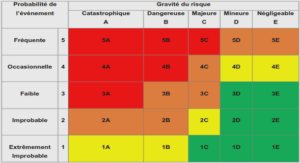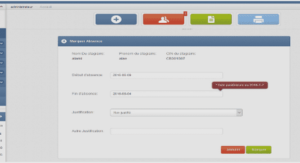ACCELERATED WEATHERING OF THE MATRIX
This fifth chapter is devoted to the cementitious matrix. The first part deals with the characterization of hydrated cement paste before the weathering. The second part presents the development of a method to accelerate matrix weathering: accelerated carbonation operation and leaching operation. Finally, the influence of accelerated weathering of the matrix on its microstructure is discussed in the third part. Diffractogram investigation indicates that the hydrated cement paste studied is mainly composed of portlandite, and ettringite. The peaks corresponding to portlandite appear at 4.900, 3.112, 2.628, 1.927, 1.796, and 1.687 Å. The main peaks corresponding to ettringite are present at 9.671, 5.583, and 3.859 Å. Presence of calcite (CaCO3) and gypsum can be observed but at a lower extent. FT-IR spectra of hydrated cement paste are shown in Figure 20 and Figure 21. Usually band assignments reported in literature are deducted from spectra performed in diffuse reflectance. In the present work, spectra acquisition is mainly performed in ATR. Band assignments on ATR spectrum (Figure 21) are deducted from spectrum performed first in diffuse reflectance (Figure 20). A shift of about 10-20 wave number units is noted between both spectra. Nevertheless the band assignments for hydrated cement paste are in close agreement with those previously reported by Mollah et al., 1995; 2004; and Farcas and Touzé, 2001 (Table 2). The band at
3645 cm-1 is due to the OH band from Ca(OH)2 (Mollah et al., 2000). The water bands appear at approximately 3440 (stretching) and 1660 (bending) cm-1 (Mollahet al., 1998). The bands at 1480-1430 cm-1, 875 cm-1 and 720 cm-1 are due to carbonates. The wide and deep band between 1480 and 1430 cm-1 is attributed to ν3 of CO3 cm-1 are due to ν2 and ν4 vibrations, respectively (Mollah, 1998). The band at 975 cm-1 is due to the Si-O asymmetric stretching band (ν3) from C-S-H (Mollah et al., 1995). In the usual procedure, a small specimen is first dried emptying the pores of any existing fluid. It is then weighed, transferred to a chamber, where the air is evacuated. Then mercury fills this chamber surrounding the specimen. Since mercury does not wet cementitious solids spontaneously, it does not intrude into empty pores unless pressure is applied. Therefore pressure in progressive increments is then applied. The intrusion of mercury at each step is monitored. The set of pressure steps and corresponding volumes intruded provides the basic data for pore size distribution calculation. The Washburn model used to convert mercury intrusion data into pore size distribution curves invokes two distinct assumptions: (i) that pores are cylindrical, and (ii) that they are entirely and equally accessible to the outer surface of the specimen. There is no distinction in the model between intrusion into a single long, continuous cylinder or intrusion into a multitude of shorter cylinders of the same diameter, as long as they are all open to the outer surface (Diamond, 2000). The access to large regions of porosity may be controlled by very small size entries and all the pores in this region (whatever their actual size) will be assigned to the size of the smallest entry (Scrivener, 2004). So, MIP data should be investigated and interpreted with care. According to Diamond (2000), MIP measurements are useful only to provide threshold diameters and intrudable pore space measurements, which can serve as comparative indices for the connectivity and capacity of the pore systems in hydrated cements. MIP measurements should be abandoned as measures of the actual pore size present. The apparent threshold diameter corresponds to a pressure above which very little intrusion into specimen is recorded, and immediately below which the greatest portion of intrusion takes place. This apparent threshold diameter is greater for higher water: cement (w/c) ratios and for younger cement pastes; reducing with age (Diamond, 2000). Pore size distribution of the hydrated cement paste studied is presented in Figure 22. The threshold diameter obtained is about 2 µ m, that is to say that essentially all of the space can be allocated to pores less than 2 µ m in size. The total porosity corresponding to the MIP measurements is of 21.6%.





